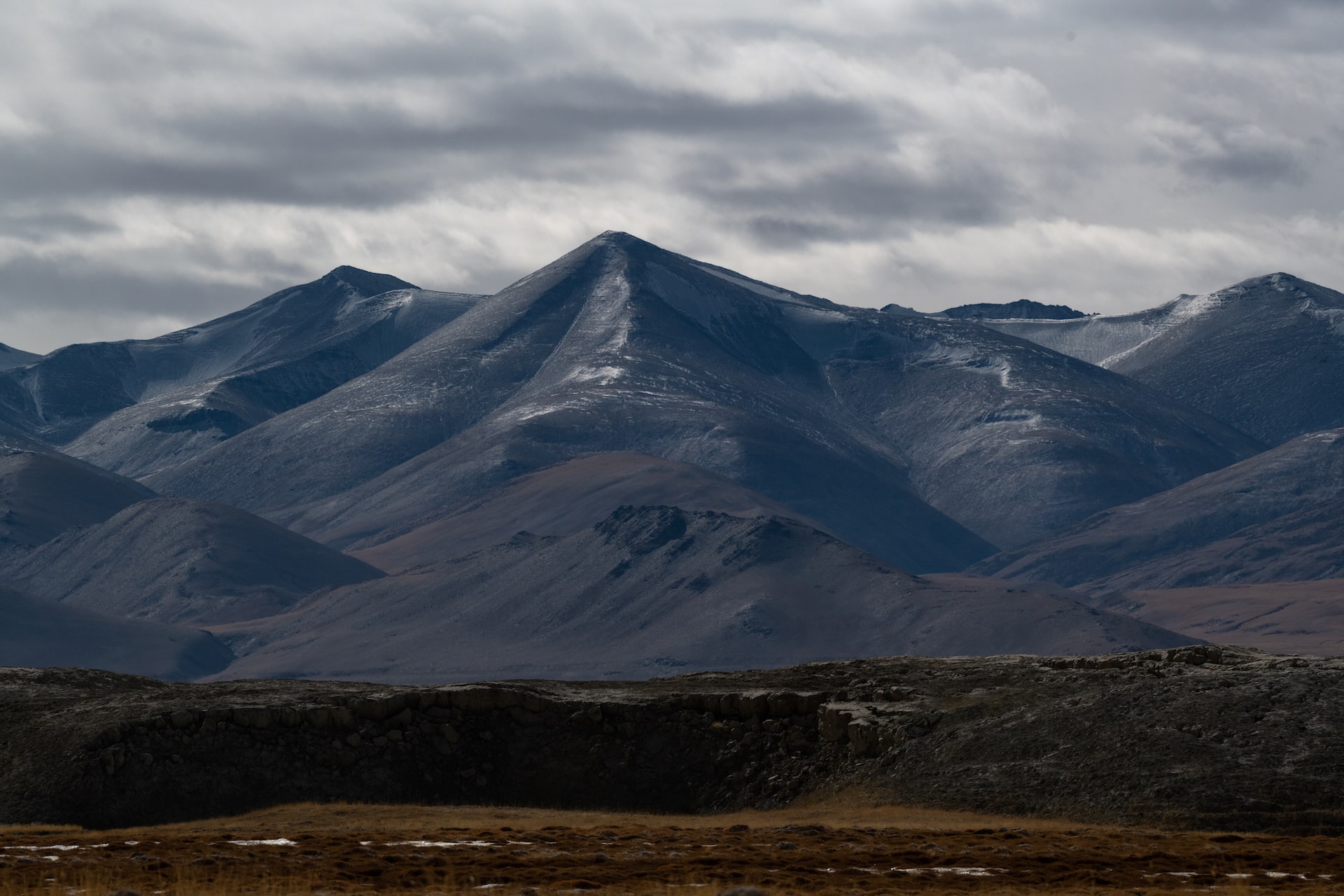
It is a surreal experience when you are nearly 6000m high, on top of a mountain pass, looking down at the blanket of white that envelopes the valleys around you. It’s peak winter and all but your will seems frozen. Then your eyes pass over the frozen river that you just traversed, taking one cautious step after another. The thick ice over the water gives it an ethereal blue tinge. The piercing frigid wind numbs your fingers and the mind feels a little subdued. As you sit down to catch your breath, the faint rays of the sun kiss your cheeks. In that moment you think, yet comprehension seizes… all that matters is that moment. These are the exact feelings one encounters when surveying for wildlife in the Changthang region of Ladakh. Nature Conservation Foundation’s (NCF) High Altitude Program(HAP) has been particularly conducting ungulate (hooved mammals – particularly wild sheep and goat) surveys, with a purpose of enumerating their populations.
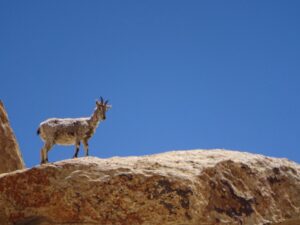
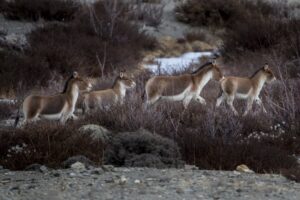
Ungulates in Changthang are really important as they serve the dual purpose of providing food for rare predators like the Snow Leopard but are also key in ensuring healthy vegetation, as feeding on it results in nutrient cycling in the soil. Ladakh, and particularly Changthang, is a unique place being both an extension of the Tibetan Plateau and a junction of several Himalayan ranges. This unique geographic confluence provides Changthang’s arid landscape with a surprisingly high animal diversity. Personally, I believe no other group of mammals are as diverse and fascinating here as this region’s ungulates. From the large Wild
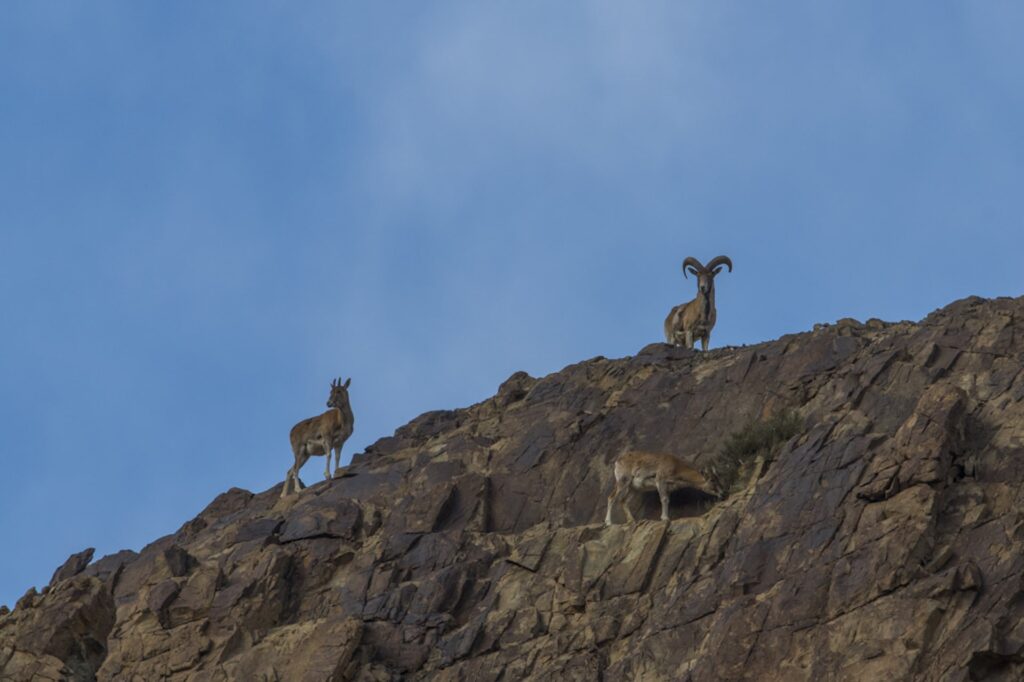
Yaks to the nimble Tibetan Gazelles, the hardy Kiang and Argali to the sure-footed Blue Sheep, the diversity is for all to see.Counting exact numbers of different ungulate species in a near contiguous, highly rugged mountain area seems to be a daunting prospect to accomplish in itself.
Add to that the fact that the majority of these areas (if not all) lie off the beaten track, away from commercial trekking routes with no predetermined paths. And if all that isn’t enough, add in wading through knee deep snow and having almost all our supplies be frozen. Sleeping bags, shoes, toothpaste, cooking oil, even our sunscreen wasn’t spared by the sub-zero temperatures. I must say though, the freeze allows us to carry copious amounts of bread for long-periods without having to worry about it becoming stale. Nonetheless, there is a rather peculiar sense of adventure and resilience Ladakh and Ladakhi’s instil in you. Across the many valleys we venture, Tsaba, in the Gya-Miru region of Changthang, is extremely intriguing. Not more than 150km 2 , this network of mountains is usually shrouded in snow, yet is called home by the rare Tibetan Argali and Blue Sheep. Having these ungulates in a relatively small area is extremely interesting, especially considering that they share this space with around 12 different herders, and there are nearly 1500 domestic sheep and goats, albeit for a period of the year. To ensure co-existence, the Tsaba herders after negotiations with members of NCF have developed a “floating reserve” in Tsaba. The idea is to not take livestock to graze in certain areas within the Tsaba valley, so as to keep the vegetation for the Argali to feed on. The floating reserve is a beautiful gesture by the herders towards the Argali, showcasing that a positive-human nature relationship can be nurtured, even in the harshest of environments.
Understanding populations of species is important because if we lack this basic information, we can’t truly know which species is in danger of dying out. It also helps us determine if the ecosystem is healthy and gives us insights into other aspects such as if a disease event has occurred in an area.
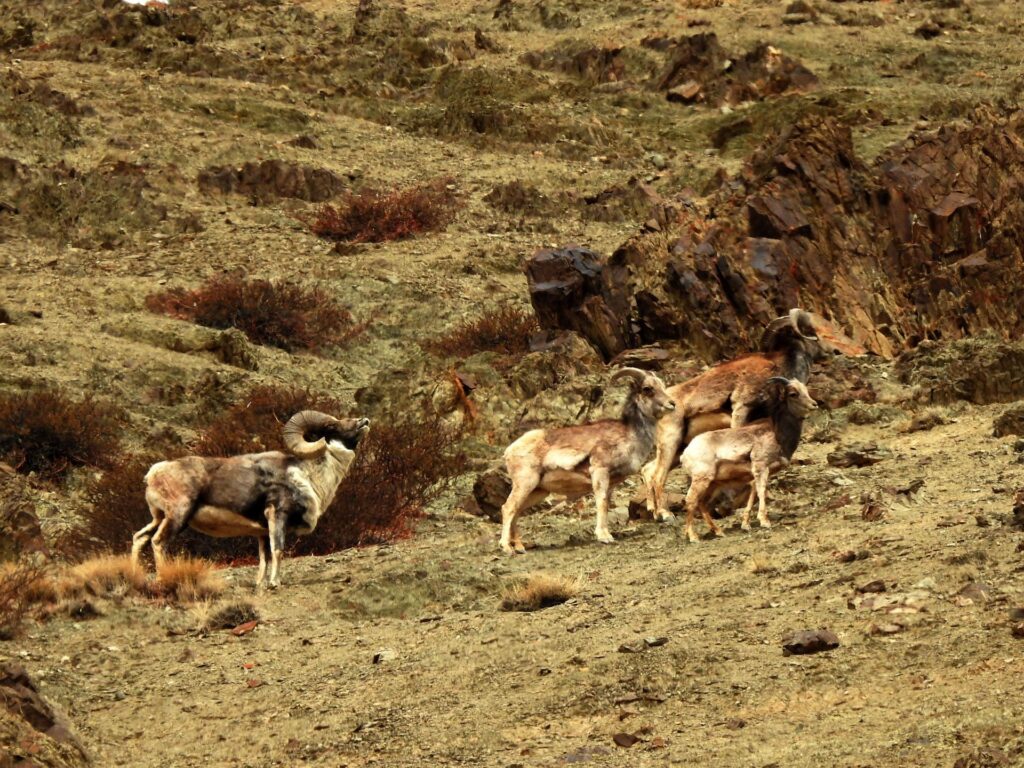
In the vast space of Changthang’s alpine steppe, with mountains continuously changing their colours and forms, from pale and rocky to almost magenta and rolling, it is easy to get lost in time. Ancient rock art in remote valleys depicting Yaks, Snow Leopards and other creatures, confirm that this space has been shaped by centuries of changes and processes. Staring into the eyes of a male Bharal, whilst he seemingly tries to balance his rather overgrown looking horns, breeds a thrilling sensation into the heart. Bharal are the Snow Leopard’s primary source of wild prey and a healthy Bharal population is a good foundation for a healthy Snow Leopard population. After all the surveys, year after year, as my team and I sit for farewell dinners, next to a burning Bukhari (A Ladakhi wood-fired heater) in Leh, we reminisce about the explorations. At their time of doing, trying to start a fire with a small clump of dry Caragana stems whilst the winds blaze through and produce a piercing pain in our bodies, or navigating a steep ice-packed river valley, with the ground literally cracking beneath our feet, seems like a curse from some episode of bad karma in the past. Not to mention several endless hours of staring at rocks through our binoculars, hoping they would be wildlife. However, it is quite a humbling feeling when one realises that thousands of villagers and especially livestock herders are doing exactly that (and much more) day in day out, trying to eke out a living in the seeming bleakness of the alpine desert that is Changthang. These hardy men and women (especially the herders) stand atop ridges, nod a joy-filled “Julley” every time we walk by or generously offer tea and a place to sleep in their Rebos (Ladakhi tents). If we are truly to conserve the beautiful creatures such as the Argali and the Bharal and really give substance to the kind of surveys we do, it is these people that we need to understand and work with. Conservation, especially in the dry landscape of Changthang is a community-endeavour.
By Munib Khanyari

